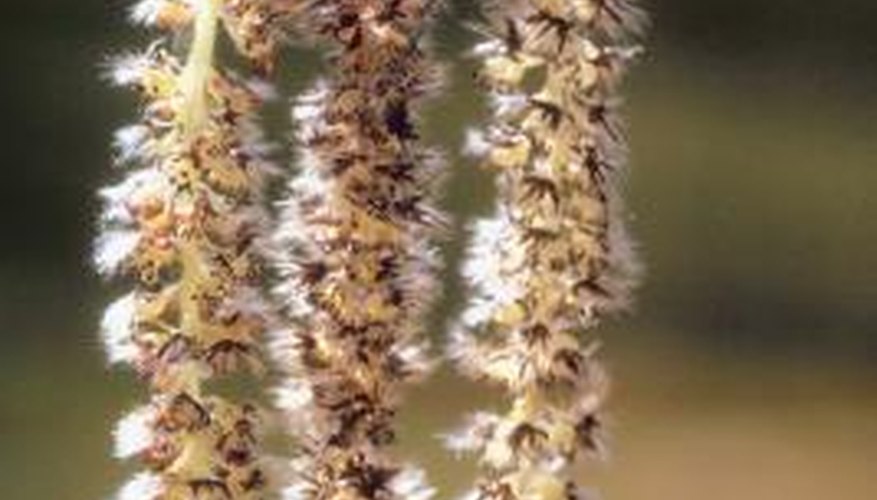The Kilmarnock or weeping goat willow (Salix caprea Kilmarnock) is available in two forms. Its natural habit is a weeping variety of goat willow (S. caprea), a small tree with long catkins that resemble those on a pussy willow (S. discolour). Kilmarnock forms a trailing mound that acts like a ground cover. Kilmarnock is also commonly sold as a 1.8 m (6 foot) standard, either with the trailing top grafted onto another variety of willow or with the plant staked and trained into a treelike form.
Planting
Site your Kilmarnock goat willow in full sun or partial shade in a moist location, such as near a pond or stream. The tree is tolerant of a wide range of soil conditions, but for rapid establishment, amend the planting site with organic material such as compost or humus and a light application of a balanced tree fertiliser.
Dig a planting hole as deep as the root ball and two to three times as wide. Remove the tree from its container and loosen the soil around the roots carefully. Prune off any broken or diseased roots.
Place the willow into the prepared planting hole, making sure the soil line is the same as it was in the container. Fill in around the roots, firming the soil to remove air pockets and ensure that the tree is secure. Water the tree well. Staking is not necessary unless you plant the tree in a windy spot.
- Site your Kilmarnock goat willow in full sun or partial shade in a moist location, such as near a pond or stream.
- Fill in around the roots, firming the soil to remove air pockets and ensure that the tree is secure.
Spread a 5 to 7.5 cm (2 to 3 inch) layer of mulch over the root zone. Keep the mulch 2.5 to 5 cm (1 or 2 inches) away from the tree trunk to prevent disease and to discourage mice and other rodents from chewing on the tree's bark.
Water often enough to keep the roots moist. Goat willows are not drought tolerant, so they need water often during dry spells. They grow quickly when their watering needs are met.
Ongoing care
Inspect your Kilmarnock goat willow after strong storms. Goat willows are prone to ice and wind damage. Prune broken stems back to a bud to encourage new growth and inhibit disease.
Fertilise the tree lightly in the spring with a balanced tree fertiliser. Follow package directions carefully. Since Kilmarnocks are fast growers, only a light feeding is needed.
Prune out suckers that grow up from the roots of standard Kilmarnock willows, as well as any branches that grow out from the trunk, to preserve the shape of the tree.
Remove tree litter such as fallen leaves or broken stems from under the tree to control the spread of disease and insects. Autumn cleanup is especially important to prevent fungal spores from overwintering near your tree.
- Inspect your Kilmarnock goat willow after strong storms.
- Remove tree litter such as fallen leaves or broken stems from under the tree to control the spread of disease and insects.
Inspect the trunk and main branches for sunken or discoloured areas, a sign of canker disease. Consult with your garden centre for advice if cankers develop.
TIP
Kilmarnock is also sold under the names Pendula and Weeping Sally.
WARNING
Like many fast-growing trees, Kilmarnock goat willows are short-lived. Once the tree starts to decline, it's best to remove it and replace it with another tree.
